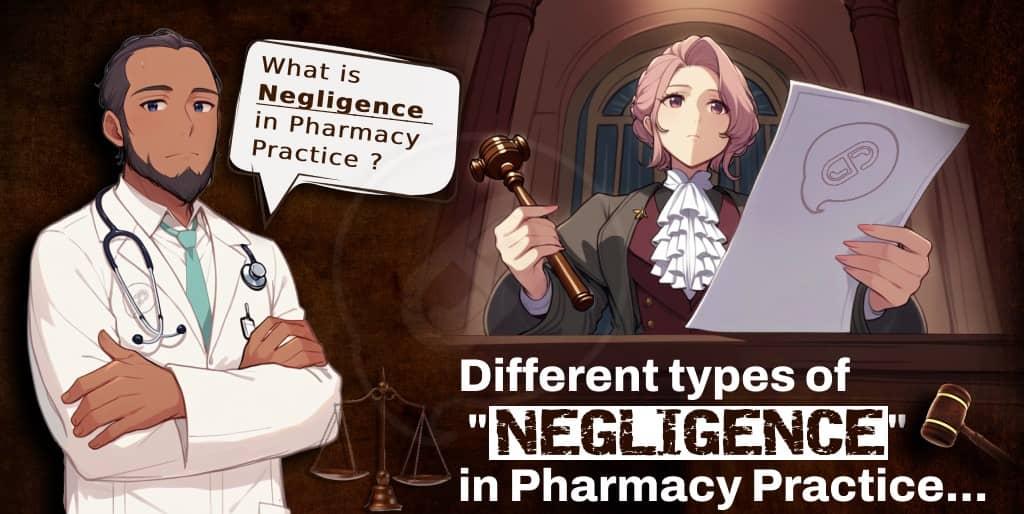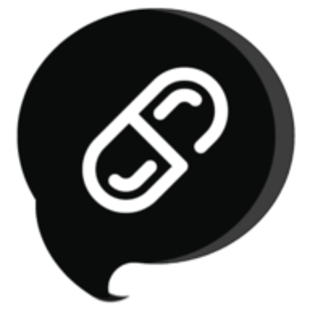Negligence in Pharmacy Practice: Understanding the Risks and Responsibilities

|
Table of contents
|
In pharmacy practice, negligence can take various forms, each with the potential to impact patient safety and care.
Understanding what negligence is and types are crucial for pharmacists to mitigate risks and enhance the quality of pharmaceutical services.
What is Negligence in Pharmacy Practice ?
Negligence in pharmacy practice refers to the failure of a pharmacist or pharmacy staff to provide the standard of care that a reasonable and competent professional would provide in similar circumstances, resulting in harm to a patient.
See: Qualities of a 10 Star ⭐️ Pharmacist..
Types of Negligence in Pharmacy Practice and How to Avoid Them.
Lets explore the different types of negligence that can occur in pharmacy practice and provide strategies to avoid them
-
Gross Negligence :
Gross negligence in pharmacy practice refers to a severe lack of care that demonstrates a blatant disregard for patient safety.
For instance, if a pharmacist dispenses a medication without verifying the patient's allergies or medication history, this could be considered gross negligence.
📌 To avoid such situations, pharmacists should implement robust verification processes, including double-checking patient records and engaging in thorough consultations with patients regarding their medications. -
Comparative Negligence :
Comparative negligence can arise in pharmacy settings when multiple parties share responsibility for a medication error. In pharmacy, this could involve both the pharmacist and the patient (or another healthcare provider) contributing to a mistake.
For example, if a pharmacist dispenses the wrong medication but the prescribing physician failed to provide clear instructions, both parties may bear some liability.
📌In such cases, it is essential for pharmacists to maintain clear communication with healthcare providers and document all interactions meticulously. This can help clarify responsibilities and reduce the risk of shared liability. -
Contributory Negligence:
Contributory negligence occurs when a patient's actions contribute to a medication error.
In some legal systems, if a patient is even slightly at fault, they may be barred from claiming damages.
While rare in healthcare, contributory negligence can apply if a patient knowingly misuses medication despite proper counseling.
📌 For instance, if a patient fails to disclose relevant health information or misunderstands medication instructions, they may share some responsibility for adverse outcomes.
To minimize the risk of contributory negligence, pharmacists should prioritize patient education, ensuring that patients fully understand their medications and the importance of providing complete health information. -
Vicarious Negligence:
Vicarious negligence, or vicarious liability, holds employers accountable for the actions of their employees.
In a pharmacy context, if a pharmacy technician makes an error while filling a prescription, the pharmacy owner may be held liable for that mistake.
📌 For instance, A technician misfills a prescription due to inadequate training, and the pharmacist fails to verify it properly. The pharmacy could face legal action for vicarious liability.
To mitigate this risk, pharmacy managers should invest in comprehensive training programs for all staff members, establish clear protocols for medication dispensing, and foster a culture of accountability and continuous improvement.
// See:- Tips for Young Pharmacy Graduates
Strategies to Avoid Negligence in Pharmacy Practice
- Implement Standard Operating Procedures (SOPs): Establish clear SOPs for all pharmacy operations, including medication dispensing, patient consultations, and error reporting.
Regularly review and update these procedures to reflect best practices. - Enhance Communication: Foster open lines of communication among pharmacists, pharmacy technicians, and healthcare providers.
Encourage team discussions about complex cases and ensure that all staff members feel comfortable asking questions. - Utilize Technology: Leverage pharmacy management systems and electronic health records to minimize human error.
Automated alerts for potential drug interactions or allergies can serve as an additional safety net. - Conduct Regular Training: Provide ongoing education and training for all pharmacy staff on the latest guidelines, medication safety, and error prevention strategies.
Regular training sessions can help reinforce the importance of diligence in pharmacy practice. - Encourage Patient Engagement: Actively involve patients in their care by encouraging them to ask questions and report any concerns about their medications.
Providing clear, written instructions can also enhance patient understanding and compliance.
see: Why I choose Pharmacy over studying Medicine
(4) Key elements Needed to Prove Negligence in Pharmacy Practice.
Understanding the four essential elements of negligence—duty of care, breach of duty of care, causation, and damages—is crucial for ensuring patient safety and minimizing legal risks.
Each of these elements must be established to prove that negligence has occurred in a pharmacy-related incident.
Below, we analyze these elements in the context of pharmacy practice.
1. Duty Of Care ✅
Pharmacists have a legal and ethical obligation to provide care that meets the standards expected of a reasonable professional in their field.
This duty of care encompasses various responsibilities, including accurately dispensing medications, providing appropriate counseling to patients, and ensuring that the pharmacy environment is safe and compliant with health regulations.
📌 For example, a pharmacist must verify a patient’s medication history and allergies before dispensing a prescription to prevent potential adverse reactions.
Failing to uphold this duty can lead to serious consequences for patients.
2. Breach of Duty of Care ✅
A breach of duty occurs when a pharmacist fails to meet the established standard of care.
This could manifest in several ways, such as dispensing the wrong medication, failing to provide necessary counseling on medication usage, or neglecting to check for drug interactions.
📌 For instance, if a pharmacist dispenses a medication without confirming the patient's allergy history, this could be considered a breach of duty.
Such lapses can jeopardize patient safety and expose the pharmacist to liability.
3. Causation ✅
Causation establishes a direct link between the breach of duty and the harm suffered by the patient.
In pharmacy practice, this means demonstrating that the pharmacist's failure to adhere to the duty of care directly resulted in injury or harm.
📌 For example, if a pharmacist dispenses a medication that a patient is allergic to, leading to an adverse reaction, the pharmacist's breach of duty is the direct cause of the patient's injury.
Causation can also be established through proximate cause, where the pharmacist's actions, while not directly causing the harm, set off a chain of events that led to the injury.
📌 For instance, if a pharmacist fails to counsel a patient on the side effects of a medication, and the patient subsequently suffers a serious reaction, the pharmacist may still be held liable.
4. Damages ✅
The final element of negligence is the presence of damages, which refers to the actual harm or loss suffered by the patient as a result of the pharmacist's negligence.
This can include physical injuries, emotional distress, or financial losses related to medical treatment.
📌 For example, if a patient experiences a severe allergic reaction due to a medication error, they may incur medical expenses, lost wages, and pain and suffering.
Establishing damages is essential for the injured party to seek compensation for their losses.
Recognizing these elements not only helps in preventing potential legal issues but also reinforces the commitment to patient safety and quality care in pharmacy practice.










